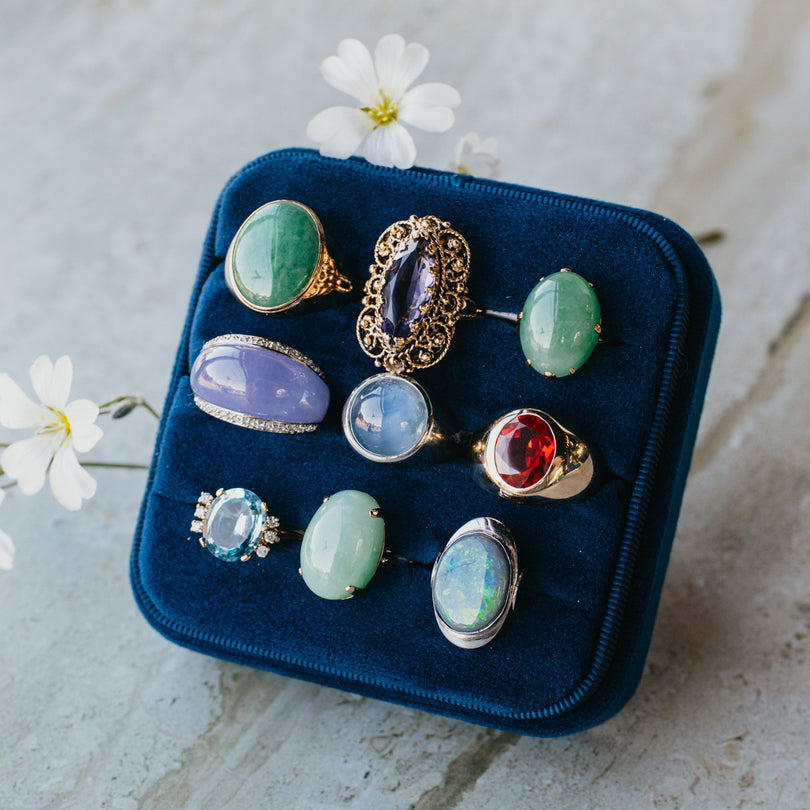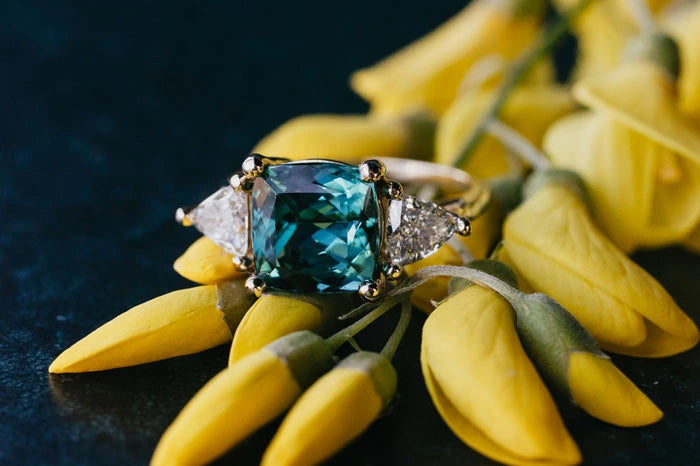Shopping for a diamond ring can feel overwhelming, but if you understand the basics, you’re already ahead of the game. The 4 Cs—Cut, Color, Clarity, and Carat—are the main factors that determine a diamond’s appearance and price. Let’s break it down so you know exactly what to look for when choosing your perfect stone.

1. Cut: The Secret Behind the Sparkle
The Cut is probably the most important C of all. It refers to how well a diamond has been shaped and faceted, not its actual shape (like round or oval). A diamond’s brilliance—how much it sparkles—comes from the quality of its cut. A poorly cut diamond won’t reflect light as well, making it look dull, no matter how good its color or clarity is.

How it affects appearance: A well-cut diamond sparkles and looks vibrant, often appearing larger than it really is.
How it affects price: The better the cut, the more expensive the diamond. But it’s worth it—this is where you’ll get the most bang for your buck when it comes to beauty.
2. Color: The Quest for Purity
When it comes to color, less is more. The ideal diamond is colorless, meaning it has no noticeable tint. Diamonds are graded from D (completely colorless) to Z (which has noticeable yellow or brown tones). The closer the diamond is to D, the more valuable it is. But here’s the thing: to the untrained eye, the difference between some grades can be nearly impossible to spot.

How it affects appearance: Diamonds in the D-F range have that crisp, icy look. Diamonds with slight color can still look great, especially when paired with certain metals like yellow or rose gold.
How it affects price: Colorless diamonds are rare and fetch higher prices. But you can save money by opting for a diamond with a slight tint that still looks gorgeous in the right setting.
3. Clarity: A Flawless Look
Clarity is all about how “clean” your diamond is. Almost all diamonds have tiny imperfections called inclusions (inside the diamond) or blemishes (on the surface). The fewer and less visible these inclusions, the higher the clarity grade. But don’t worry—most inclusions are so small that they can’t be seen without magnification.

How it affects appearance: Unless you’re buying a diamond with major inclusions, clarity won’t affect what you see with your naked eye.
How it affects price: Flawless diamonds are rare and super expensive. But if you choose a diamond with minor, invisible inclusions, you can get great value without sacrificing appearance.
4. Carat: Weighing The Difference
Carat refers to a diamond’s weight, and people often think bigger is better. But while a larger diamond can be impressive, it’s not everything. A diamond’s brilliance depends more on its cut than its size. That’s why a smaller, well-cut diamond can outshine a larger one.

How it affects appearance: A higher carat weight usually means a bigger diamond, but factors like cut and setting can make a diamond look even larger than its actual weight.
How it affects price: As carat weight increases, so does the price—often exponentially. But remember, a well-cut, smaller diamond can offer just as much wow factor as a bigger one.
Putting It All Together: Your Diamond, Your Rules
When it comes to picking the perfect diamond, there’s no one-size-fits-all approach. It’s about finding the right balance. Want a diamond that dazzles without breaking the bank? Consider compromising on carat weight and color but aim for the best cut you can afford. After all, a well-cut diamond will shine no matter its size!
Understanding the 4 Cs gives you the confidence to find a diamond that suits your style and budget. Whether you’re going for classic elegance or something bold, knowing what to look for ensures you’ll walk away with a ring that’s as special as your love story.












 4.9 | 515+ Verified Reviews • Authentic Craftsmanship • Unmatched Service
4.9 | 515+ Verified Reviews • Authentic Craftsmanship • Unmatched Service